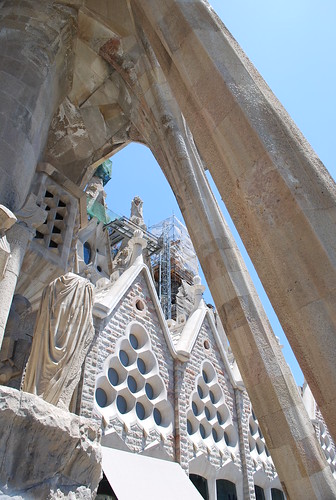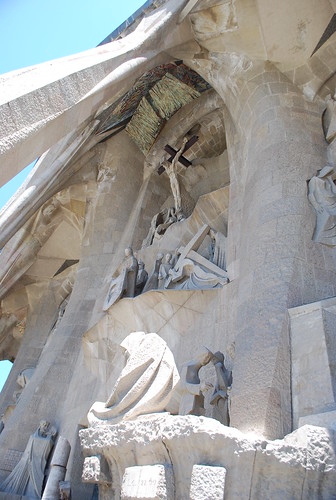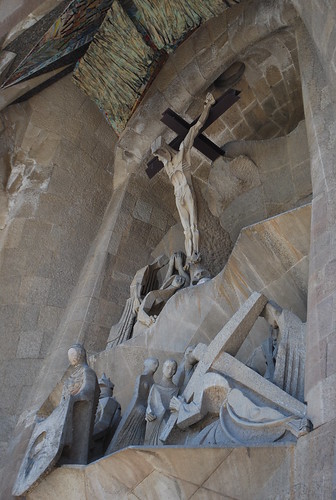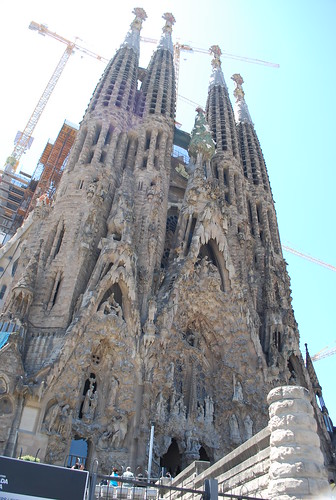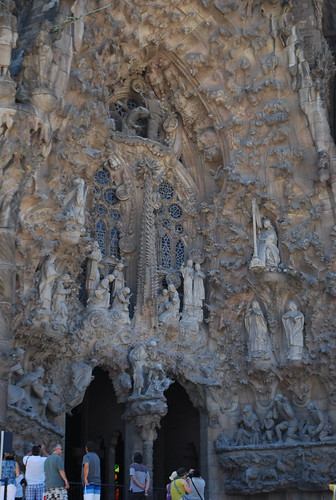sub·lime: [suh-blahym] adjective, noun, verb, -limed, -lim·ing.
–adjective
1. elevated or lofty in thought, language, etc.: Paradise Lost is sublime poetry.
2. impressing the mind with a sense of grandeur or power; inspiring awe, veneration, etc.: Switzerland has sublime scenery.
3. Archaic: raised high; high up.
–verb (used with object)
1. to make higher, nobler, or purer.
—Synonyms 1. exalted, noble. 2. magnificent, superb, august, grand, gorgeous, resplendent, imposing, majestic.
In his Tales of the Alhambra, my new friend Washington Irving wrote, "There is something...in the sternly simple features of the Spanish landscape that impresses the soul with a feeling of sublimity". In my opinion, that couldn't be more true than when beholding the landscape of Granada and the imposing walls of the Alhambra high up on the rocky hillside.
If the name Washington Irving doesn't ring a bell, perhaps you'll know him by the tales he penned that take place a little closer to home, such as Rip Van Winkle or The Legend of Sleepy Hollow. I can hear the light bulbs coming on and the collective, "Ooooohhhh! THAT Washington Irving!" (I've been to Sleepy Hollow, by the way, and felt a little thrill in the ribcage when I saw the sign upon entering the decidedly awake and utterly charming little hamlet.)
Well, in addition to his success as a story teller, essayist, editor, soldier, and all-around busy guy, he was also a diplomat and traveled extensively throughout Spain as its U.S. minister in the early to mid 1800's. I picked up The Tales of the Alhambra while visiting the Alhambra and have been reading and re-reading it ever since. It was in the room in Alhambra's Nasrid Palace with a plaque dedicated to Irving and his prodigeous scribbling that my classmate Hudson encountered an impressive fan following of Spanish pre-teens.
But I've gone too far ahead already - I'm supposed to be telling you about our visit to the Alhambra: The city of Granada, the Alhambra, the Generalife - all were by far my favorite part of visiting Spain. The history is awe-inspiring, to say nothing of the architecture and craftsmanship that went into building the fortress, palaces, and their gardens. I wish I had Irving's way with words and could describe it the way he did, but I don't so I'll let him introduce the place to you:
"The peculiar charm of this old dreamy palace is its power of calling up vague reveries and picturings of the past, and thus clothing naked realities with the illusions of the memory and the imagination....Here the hand of time has fallen the lightest and the traces of Moorish elegance and splendour exist in almost their original brilliancy. From The Tales of the Alhambra by Washington Irving, published 1832.
Earthquakes have shaken the foundations of this pile and rent its rudest towers, yet see, not one of those slender columns has been displaced, not an arch of that light and fragile colonnade has given way, and all the fairy fretwork of those domes, apparently as unsubstantial as the crystal fabrics of a morning's frost, yet exist after the lapse of centuries, almost as fresh as if from the hand of the Moslem artist.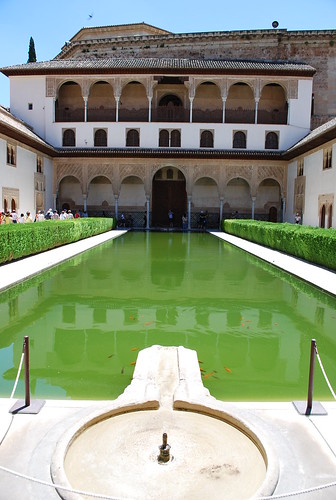
***
"To the traveller imbued with a feeling for the historical and poetical, the Alhambra of Granada is as much as object of veneration as is the Kaaba or sacred house of Mecca to all true Moslem pilgrims. How many legends and traditions, true and fabulous, of love and war and chivalry are associated with this romantic pile! The following papers are the result of my reveries and researches during that delicious thraldrom. If they have the power of imparting any of the witching charms of the place to the imagination of the reader, he will not repine at lingering with me for a season in the legendary halls of the Alhambra."
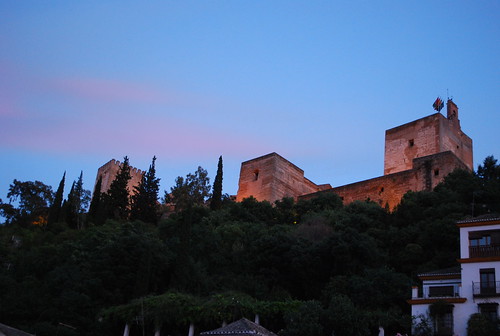


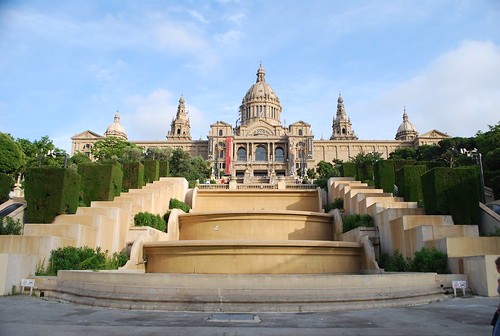 Font màgica de Montjuïc at the head of Avenida Maria Cristina was proposed, built, and opened in a year, just in time for the 1929 Great Universal Exhibition. With the imposing National Museum of Art of Catalonia as a backdrop, the views of Barcelona from the top are stunning.
Font màgica de Montjuïc at the head of Avenida Maria Cristina was proposed, built, and opened in a year, just in time for the 1929 Great Universal Exhibition. With the imposing National Museum of Art of Catalonia as a backdrop, the views of Barcelona from the top are stunning.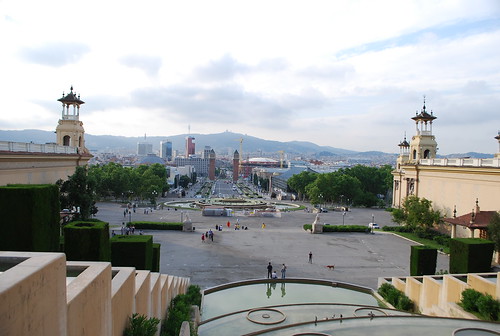 On our last evening in Barcelona, some of us decided to see the fountain show. We emerged from the Metro stop, rounded the corner, and basically stopped in our tracks. It's amazing the difference a little light and water can make in a landscape.
On our last evening in Barcelona, some of us decided to see the fountain show. We emerged from the Metro stop, rounded the corner, and basically stopped in our tracks. It's amazing the difference a little light and water can make in a landscape.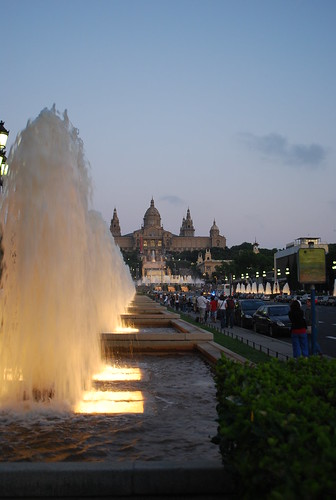
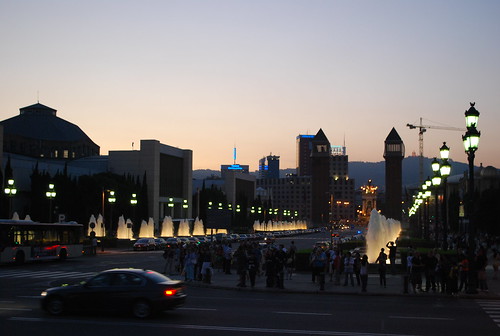
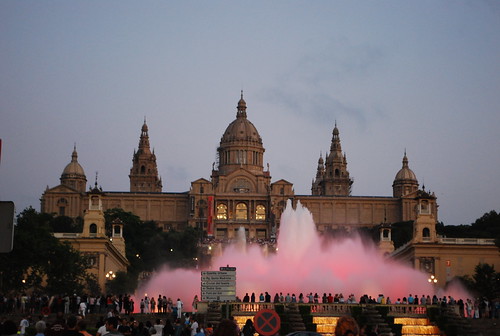
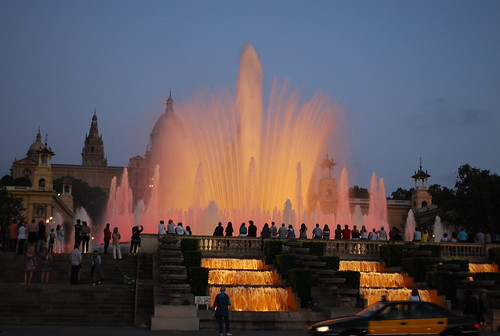
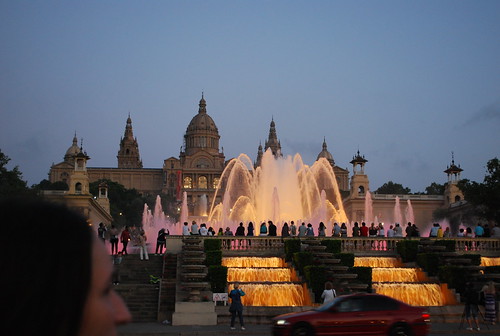
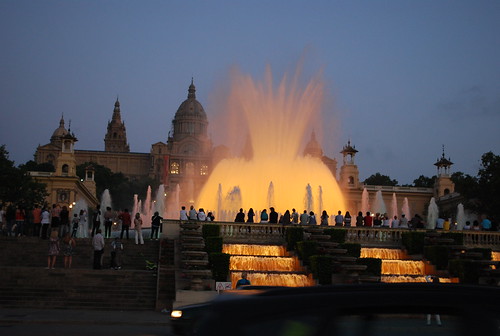

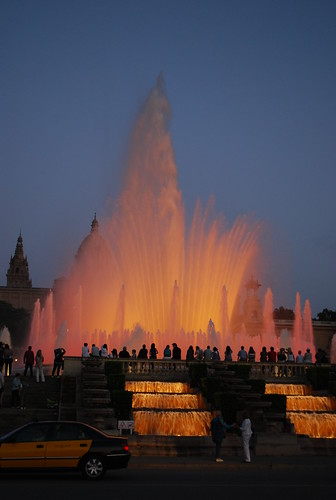
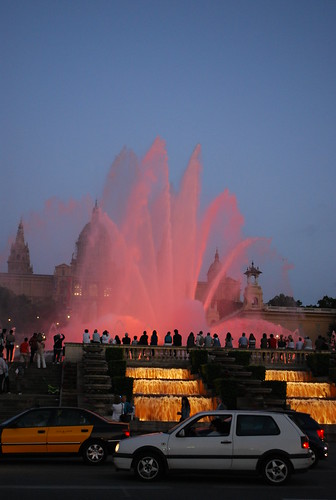
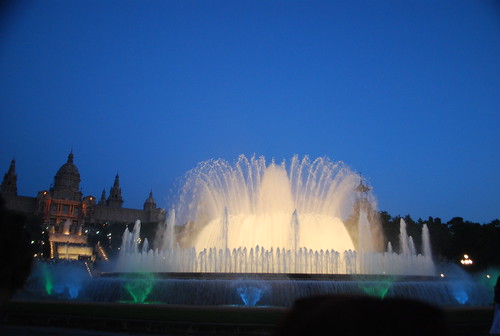
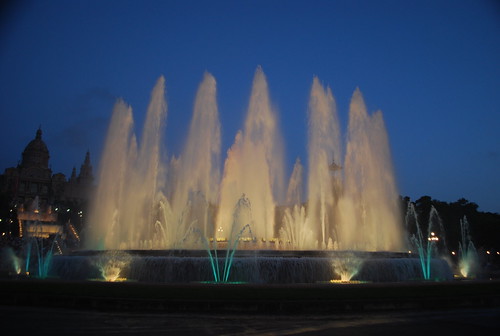
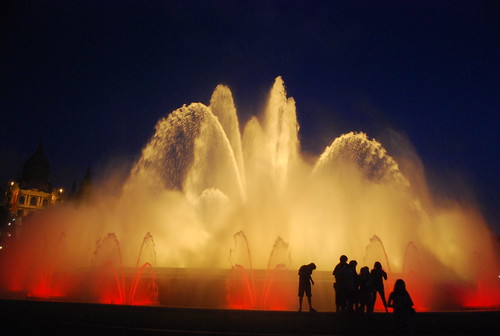 Yeah, I think Pierre would have been impressed!
Yeah, I think Pierre would have been impressed!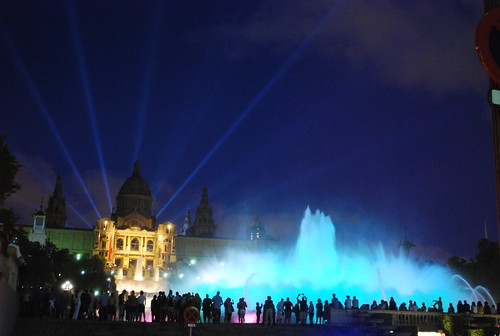
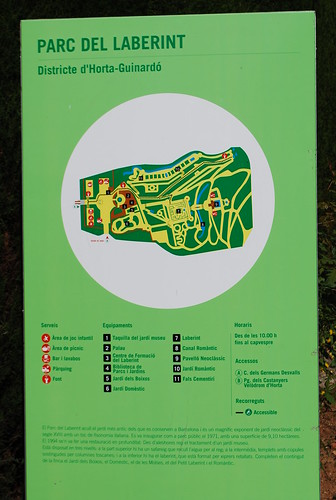
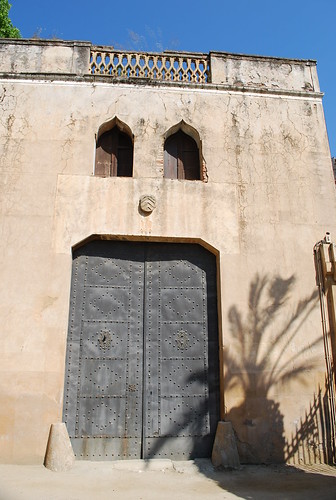
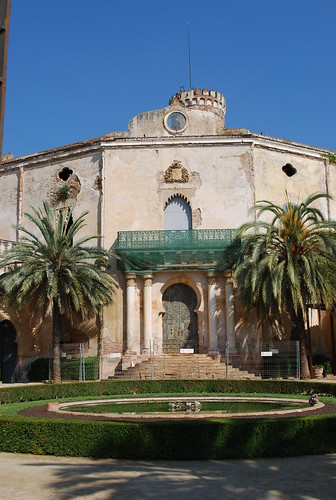
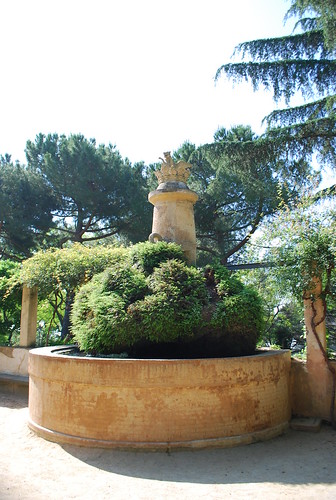 What makes this garden so wonderful is not only the 750 person per day visitor limit but the use of terraces, vistas, and garden rooms that give you the feeling of being in several gardens, not just one. Water is used to effect to draw you from one room to the next, first running along then inviting you to pause and reflect by one of the many still pools. There are ample places for one to sit and enjoy the cool green shade, which I did a lot of since it was hot the day we visited!
What makes this garden so wonderful is not only the 750 person per day visitor limit but the use of terraces, vistas, and garden rooms that give you the feeling of being in several gardens, not just one. Water is used to effect to draw you from one room to the next, first running along then inviting you to pause and reflect by one of the many still pools. There are ample places for one to sit and enjoy the cool green shade, which I did a lot of since it was hot the day we visited! 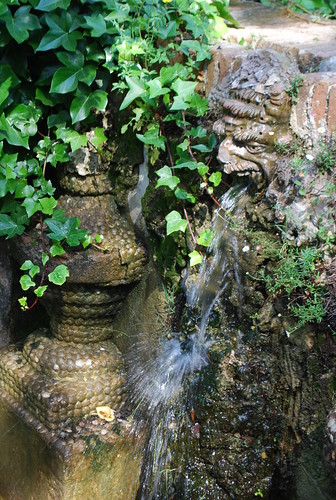
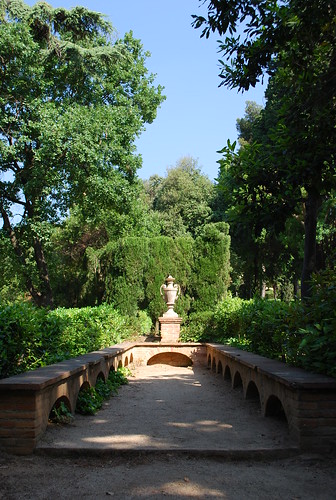 The neoclassical elements in the garden made me wish I had paid more attention in my college Greek and Roman mythology class. Statues and busts of Greek mythical figures decorated the garden rooms, giving one who knows how to 'read' the garden a clue to its overarching theme: love and death. I find with many of the classic tragic love stories that one or other of the lovers usually ends up losing thier head over their amour. This guy was obviously no exception.
The neoclassical elements in the garden made me wish I had paid more attention in my college Greek and Roman mythology class. Statues and busts of Greek mythical figures decorated the garden rooms, giving one who knows how to 'read' the garden a clue to its overarching theme: love and death. I find with many of the classic tragic love stories that one or other of the lovers usually ends up losing thier head over their amour. This guy was obviously no exception.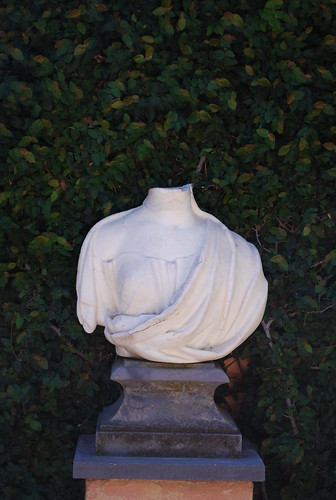
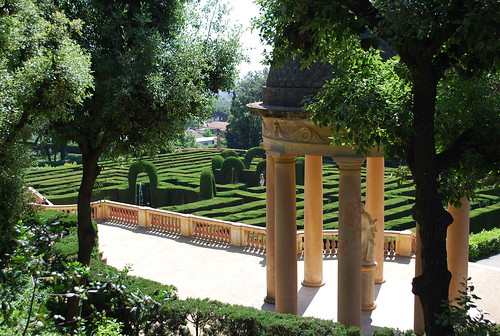

 On the terrace above the labyrinth is a neoclassic pavilion with a reflecting pool and fountain reached by crossing a bridge over the Romantic Canal, at the end of which is the Island of Love. A sculpture of Egeria, a mythological water nymph, overlooks the pool.
On the terrace above the labyrinth is a neoclassic pavilion with a reflecting pool and fountain reached by crossing a bridge over the Romantic Canal, at the end of which is the Island of Love. A sculpture of Egeria, a mythological water nymph, overlooks the pool.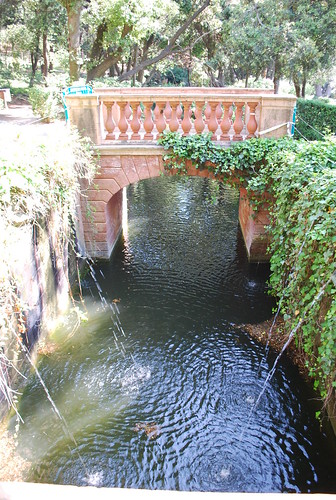
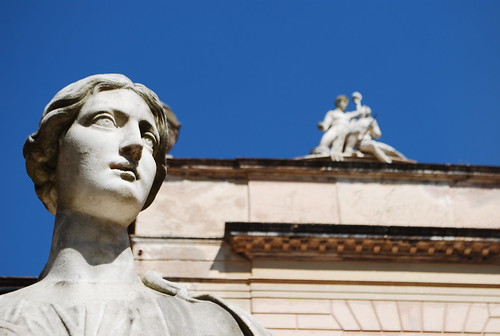 The newer Jardi Romantic lies on the lowest terrace and is shaded by tall pines and Eucalyptus. The beds are divided in to myrtle-lined rectangles covered in Agapanthus (one common name for it is Flower of Love). When in bloom, I imagine the area would look like a gently waving sea of blossom! Oddly enough, this garden terminates in what used to be called the "false cemetery" which was outfitted with ornamental headstones (no longer there - gee, I wonder why?). This part of the garden does have a more tranquil feeling than the rooms of the upper terraces, and I was drawn to it by the sound of rushing water which I found to be a waterfall and channel that ran the length of the garden. In the center was another quiet pool with a long stone bench echoing the arch of the pool on one side.
The newer Jardi Romantic lies on the lowest terrace and is shaded by tall pines and Eucalyptus. The beds are divided in to myrtle-lined rectangles covered in Agapanthus (one common name for it is Flower of Love). When in bloom, I imagine the area would look like a gently waving sea of blossom! Oddly enough, this garden terminates in what used to be called the "false cemetery" which was outfitted with ornamental headstones (no longer there - gee, I wonder why?). This part of the garden does have a more tranquil feeling than the rooms of the upper terraces, and I was drawn to it by the sound of rushing water which I found to be a waterfall and channel that ran the length of the garden. In the center was another quiet pool with a long stone bench echoing the arch of the pool on one side.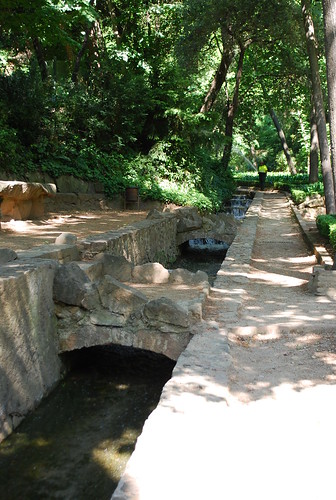
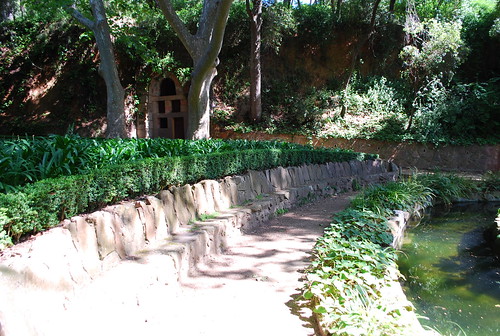
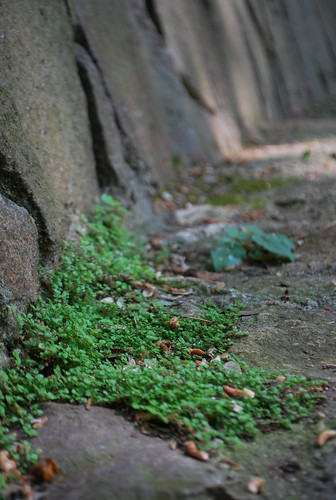
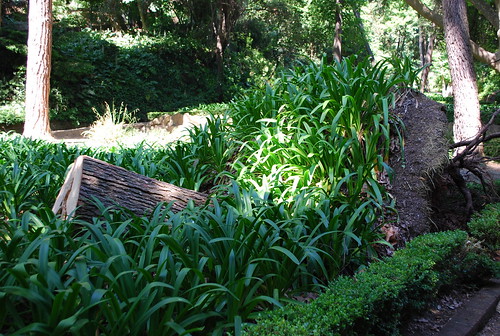
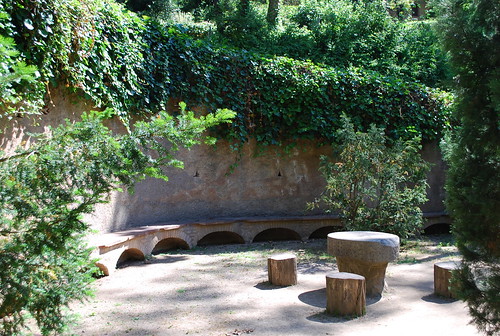
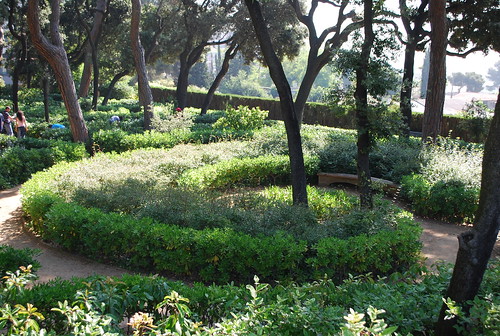
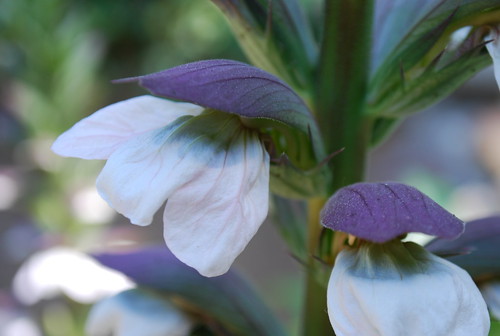
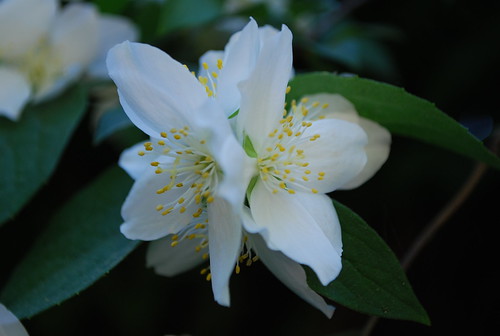
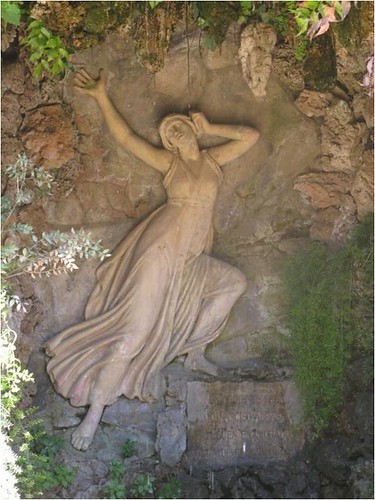 For most of us, this was the favorite garden in Barcelona. When next you're in the area, make a point of visiting. Take along a book of Greek Myths to enjoy while listening to the sound of water playing over the stones, or spend the day with your sweetheart and write a new chapter in your own love story here. Whatever your reason for visiting, Parc del Laberint should be on every garden lover's list when in Barcelona!
For most of us, this was the favorite garden in Barcelona. When next you're in the area, make a point of visiting. Take along a book of Greek Myths to enjoy while listening to the sound of water playing over the stones, or spend the day with your sweetheart and write a new chapter in your own love story here. Whatever your reason for visiting, Parc del Laberint should be on every garden lover's list when in Barcelona!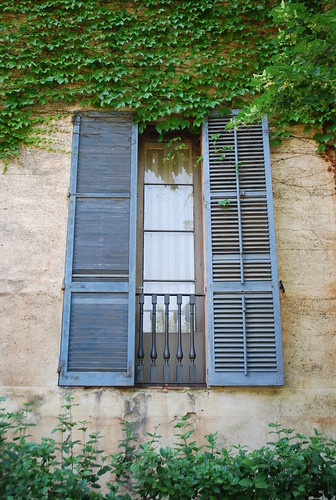

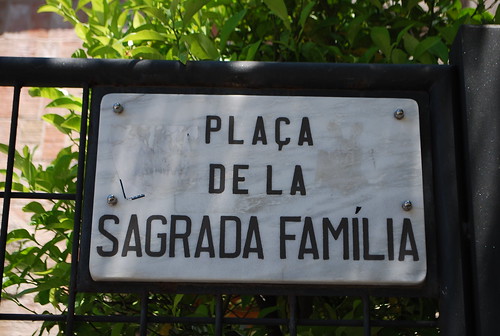
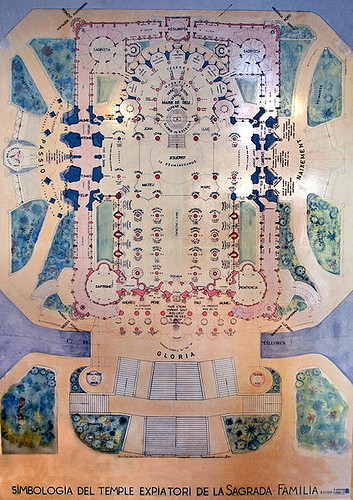

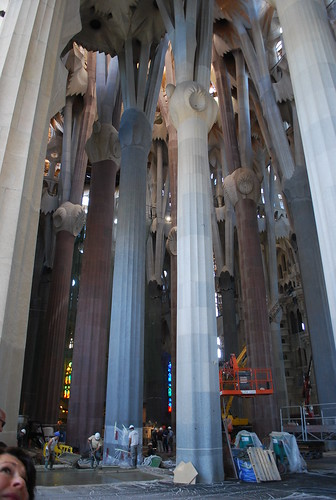

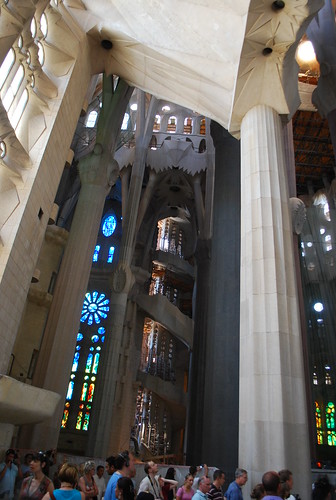

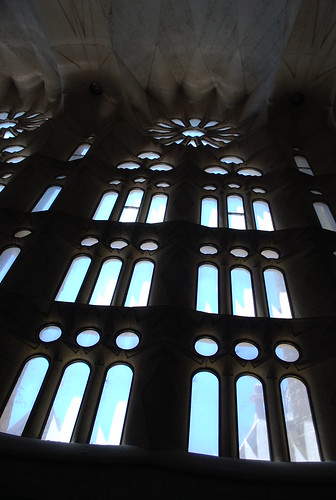 Imagine stained glass in the windows!
Imagine stained glass in the windows!

 Emerging from the exit you find yourself under the Passion Façade. This depicts the passion - the pain, sacrifice, and death - of Christ. The sculptures by Josep Maria Subirachs are very stylistic. The façade faces west and receives the last rays of the setting sun, creating dramatic light and shadow effects.
Emerging from the exit you find yourself under the Passion Façade. This depicts the passion - the pain, sacrifice, and death - of Christ. The sculptures by Josep Maria Subirachs are very stylistic. The façade faces west and receives the last rays of the setting sun, creating dramatic light and shadow effects.
